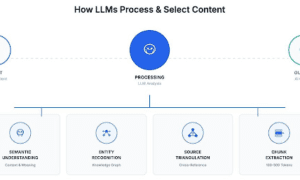Collective investment platforms have emerged as powerful tools for fostering community growth. These platforms bring together individuals who share a common goal: pooling their resources to support projects that benefit local communities. As traditional funding methods often fall short, these platforms offer an innovative approach to bridge the gap. From revitalizing neighborhoods to launching sustainable initiatives, they empower communities to take charge of their development.
Understanding Collective Investment Platforms
Before diving into specific platforms, it’sC essential to grasp what collective investment entails. A collective investment platform allows individuals or groups to pool their resources, often through small contributions, to fund larger projects. These projects might include building affordable housing, renewable energy ventures, or community infrastructure.
Such platforms are fueled by modern technology and crowdfunding principles. They leverage the power of online networks to connect like-minded individuals with a shared vision. This democratization of funding ensures everyone, regardless of financial capacity, can participate in impactful community initiatives.
Key Features of Effective Collective Investment Platforms
Not all platforms are created equal. The most impactful ones share a few defining characteristics:
Transparency:
Trust is crucial for community-backed investments. Platforms that provide clear details about fund allocation, project milestones, and expected outcomes tend to attract more participants.
Accessibility:
The best platforms ensure ease of use, enabling individuals from diverse backgrounds to contribute without technical challenges.
Inclusivity:
These platforms welcome contributions of all sizes, ensuring that even small investors can make a difference.
Accountability:
Regular updates on project progress and financial reports help maintain trust and ensure funds are utilized effectively.
Popular Platforms for Collective Investment in Community Projects
GoFundMe
GoFundMe is a widely recognized platform known for its simplicity and global reach. While it’s often associated with personal fundraising campaigns, it’s also a popular choice for community projects. Local organizations frequently use GoFundMe to raise money for parks, schools, or cultural events.
- Advantages: Easy to set up campaigns, no minimum fundraising requirements.
- Drawbacks: Higher fees compared to other platforms.
GoFundMe is ideal for short-term or small-scale projects that require a quick boost in funding.
Neighborly
Neighborly focuses specifically on community infrastructure projects. It connects local governments and developers with individuals willing to invest in initiatives like schools, public transportation, or renewable energy systems.
- Advantages: Tailored for larger-scale projects, strong focus on public benefits.
- Drawbacks: Requires thorough vetting and regulatory compliance, limiting access for smaller initiatives.
Neighborly’s focus on sustainable development ensures that investments directly improve community living standards.
Kiva
Kiva specializes in micro-loans for individuals and small businesses, often in underserved areas. While not exclusively for community projects, Kiva’s model empowers local entrepreneurs to create jobs and support their neighborhoods.
- Advantages: Interest-free loans, global network.
- Drawbacks: Limited to loans rather than direct funding for projects.
- Kiva’s success lies in its ability to connect people with tangible, measurable goals.
Fundrise
Fundrise focuses on real estate investments, making it ideal for community-driven housing projects. It allows individuals to invest in commercial and residential developments, often with a focus on underserved areas.
- Advantages: Attractive returns, detailed project insights.
- Drawbacks: Higher minimum investment compared to crowdfunding platforms.
- For communities aiming to improve housing availability, Fundrise offers a sustainable solution.
StartSomeGood
StartSomeGood empowers social entrepreneurs to fundraise for initiatives that address pressing social challenges. It supports a wide range of projects, from education programs to environmental conservation.
- Advantages: Focus on social impact, strong support for campaigners.
- Drawbacks: Smaller user base compared to mainstream platforms.
- StartSomeGood’s targeted approach ensures resources are directed toward high-impact initiatives.
Benefits of Collective Investment Platforms
These platforms offer numerous advantages, not only to communities but also to individual contributors:
- Empowering Local Communities: By pooling resources, community members can take ownership of projects that directly impact their lives.
- Encouraging Participation: Platforms make it easy for individuals to contribute, fostering a sense of shared responsibility.
- Boosting Transparency: Regular updates and clear communication ensure accountability and trust.
- Promoting Financial Inclusion: By lowering the barriers to entry, even individuals with limited means can participate.
- Fostering Innovation: Crowdfunding platforms encourage creative solutions to local challenges.
Challenges and How to Overcome Them
Despite their potential, collective investment platforms face certain challenges:
- Lack of Awareness: Many communities are unaware of these platforms. Education campaigns can bridge this gap.
- Trust Issues: Mismanagement or lack of transparency can deter participation. Choosing reputable platforms with a proven track record is essential.
- Regulatory Hurdles: Compliance with local laws can be complex. Partnering with legal experts ensures smooth operations.
- Sustainability: Long-term projects require consistent funding and management. Developing robust business models helps maintain momentum.
Steps to Get Started
For communities eager to leverage these platforms, here’s a step-by-step guide:
- Identify the Project: Clearly define the community’s needs and goals.
- Research Platforms: Compare different platforms to find the best fit for your project.
- Build a Campaign: Create a compelling story to attract contributors.
- Engage the Community: Use social media, local events, and partnerships to spread the word.
- Maintain Transparency: Keep contributors informed with regular updates.
- Celebrate Success: Highlight milestones to show progress and maintain enthusiasm.
Conclusion
In conclusion, these platforms will become even more accessible and effective. Innovations like blockchain could enhance transparency, while AI-driven tools might improve campaign targeting. The future holds immense potential for empowering communities worldwide through collective investment. By embracing these platforms, individuals and communities can drive meaningful change, ensuring a brighter future for everyone.

































